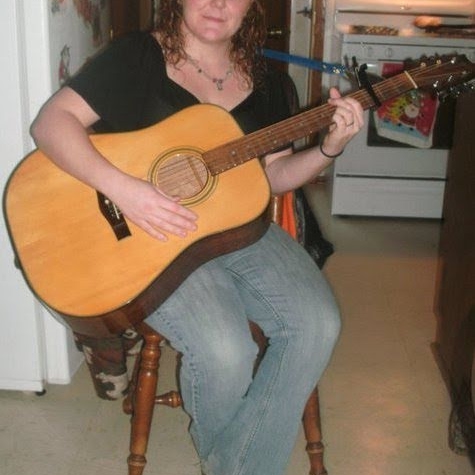Michelle D Shinn
age ~68
from Newport News, VA
- Also known as:
-
- Michelle Diane Shinn
- Michell M Shinn
- Michelle D Smin
- Phone and address:
-
116 Archer Rd, Newport News, VA 23606
757 930-9290
Michelle Shinn Phones & Addresses
- 116 Archer Rd, Newport News, VA 23606 • 757 930-9290 • 757 930-8101
- Buckhannon, WV
- Newtown Square, PA
- Bryn Mawr, PA
- Tracy, CA
- 116 Archer Rd, Newport News, VA 23606 • 757 930-9290
Work
-
Position:Professional/Technical
Education
-
Degree:Graduate or professional degree
Emails
Name / Title
Company / Classification
Phones & Addresses
NAILS'R'US LLC
Resumes

Michelle Shinn
view source
Michelle Shinn
view source
Michelle Shinn
view source
Michelle Shinn
view source
Michelle Shinn
view source
Michelle Shinn
view sourceLocation:
United States

Michelle Shinn
view sourceLocation:
United States
Us Patents
-
Single Element Laser Beam Shaper
view source -
US Patent:6943964, Sep 13, 2005
-
Filed:Jun 1, 2004
-
Appl. No.:10/858143
-
Inventors:Shukui Zhang - Yorktown VA, US
Michelle D. Shinn - Newport News VA, US -
Assignee:Southeastern Univ. Research Assn. - Newport News VA
-
International Classification:G02B013/18
-
US Classification:359708, 359718
-
Abstract:A single lens laser beam shaper for converting laser beams from any spatial profile to a flat-top or uniform spatial profile. The laser beam shaper includes a lens having two aspheric surfaces. The beam shaper significantly simplifies the overall structure in comparison with conventional 2-element systems and therefore provides great ease in alignment and reduction of cost.
-
Radius Of Curvature Controlled Mirror
view source -
US Patent:6986585, Jan 17, 2006
-
Filed:Nov 1, 2004
-
Appl. No.:10/978887
-
Inventors:George R. Neil - Williamsburg VA, US
John Wickham Rathke - Centerport NY, US
Thomas John Schultheiss - Commack NY, US
Michelle D. Shinn - Newport News VA, US
Lawrence A. Dillon-Townes - Newport News VA, US -
Assignee:Southeastern Univ. Research Assm - Newport News VA
-
International Classification:G02B 5/08
-
US Classification:359845, 359224
-
Abstract:A controlled radius of curvature mirror assembly comprising: a distortable mirror having a reflective surface and a rear surface; and in descending order from the rear surface; a counter-distortion plate; a flow diverter having a flow diverter aperture at the center thereof; a flow return plate having a flow return aperture at the center thereof; a thermal isolation plate having a thermal isolation plate aperture at the center thereof and a flexible heater having a rear surface and a flexible heater aperture at the center thereof; a double walled tube defining a coolant feed chamber and a coolant return chamber; said coolant feed chamber extending to and through the flow diverter aperture and terminating at the counter-distortion plate and the coolant return chamber extending to and through the thermal isolation backplate and terminating at the flow diverter; and a coolant feed and a coolant return exit at the rear of said flexible heater.
-
Laser Ablation For The Synthesis Of Carbon Nanotubes
view source -
US Patent:7692116, Apr 6, 2010
-
Filed:Jul 3, 2002
-
Appl. No.:10/188525
-
Inventors:Brian C. Holloway - Williamsburg VA, US
Peter C. Eklund - Boalsburg PA, US
Michael W. Smith - Newport News VA, US
Kevin C. Jordan - Newport News VA, US
Michelle Shinn - Newport News VA, US -
Assignee:Jefferson Science Associates - Newport News VA
-
International Classification:B23K 26/12
-
US Classification:21912186, 21912184, 2191216
-
Abstract:Single walled carbon nanotubes are produced in a novel apparatus by the laser-induced ablation of moving carbon target. The laser used is of high average power and ultra-fast pulsing. According to various preferred embodiments, the laser produces an output above about 50 watts/cmat a repetition rate above about 15 MHz and exhibits a pulse duration below about 10 picoseconds. The carbon, carbon/catalyst target and the laser beam are moved relative to one another and a focused flow of “side pumped”, preheated inert gas is introduced near the point of ablation to minimize or eliminate interference by the ablated plume by removal of the plume and introduction of new target area for incidence with the laser beam. When the target is moved relative to the laser beam, rotational or translational movement may be imparted thereto, but rotation of the target is preferred.
-
Mirror With Thermally Controlled Radius Of Curvature
view source -
US Patent:7740362, Jun 22, 2010
-
Filed:Feb 19, 2008
-
Appl. No.:12/070522
-
Inventors:George R. Neil - Williamsburg VA, US
Michelle D. Shinn - Newport News VA, US -
Assignee:Jefferson Science Associates - Newport News VA
-
International Classification:G02B 5/08
G02B 7/185
G02B 7/195 -
US Classification:359845, 359846, 359848
-
Abstract:A radius of curvature controlled mirror for controlling precisely the focal point of a laser beam or other light beam. The radius of curvature controlled mirror provides nearly spherical distortion of the mirror in response to differential expansion between the front and rear surfaces of the mirror. The radius of curvature controlled mirror compensates for changes in other optical components due to heating or other physical changes. The radius of curvature controlled mirror includes an arrangement for adjusting the temperature of the front surface and separately adjusting the temperature of the rear surface to control the radius of curvature. The temperature adjustment arrangements can include cooling channels within the mirror body or convection of a gas upon the surface of the mirror. A control system controls the differential expansion between the front and rear surfaces to achieve the desired radius of curvature.
-
Laser Ablation For The Synthesis Of Carbon Nanotubes
view source -
US Patent:8317983, Nov 27, 2012
-
Filed:Apr 2, 2010
-
Appl. No.:12/798377
-
Inventors:Brian C. Holloway - Williamsburg VA, US
Peter C. Eklund - Boalsburg PA, US
Michael W. Smith - Newport News VA, US
Kevin C. Jordan - Newport News VA, US
Michelle Shinn - Newport News VA, US -
Assignee:Jefferson Science Associates, LLC - Newport News VA
-
International Classification:B01J 19/12
-
US Classification:20415741, 20415747, 977844, 4234471
-
Abstract:Single walled carbon nanotubes are produced in a novel apparatus by the laser-induced ablation of moving carbon target. The laser used is of high average power and ultra-fast pulsing. According to various preferred embodiments, the laser produces and output above about 50 watts/cmat a repetition rate above about 15 MHz and exhibits a pulse duration below about 10 picoseconds. The carbon, carbon/catalyst target and the laser beam are moved relative to one another and a focused flow of “side pumped”, preheated inert gas is introduced near the point of ablation to minimize or eliminate interference by the ablated plume by removal of the plume and introduction of new target area for incidence with the laser beam. When the target is moved relative to the laser beam, rotational or translational movement may be imparted thereto, but rotation of the target is preferred.
-
Process For Laser Machining And Surface Treatment
view source -
US Patent:6809291, Oct 26, 2004
-
Filed:Aug 30, 2002
-
Appl. No.:10/231580
-
Inventors:George R. Neil - Williamsburg VA
Michelle D. Shinn - Newport News VA -
Assignee:Southeastern Universities Research Assn., Inc. - Newport News VA
-
International Classification:B23K 2636
-
US Classification:21912176, 21912168
-
Abstract:An improved method and apparatus increasing the accuracy and reducing the time required to machine materials, surface treat materials, and allow better control of defects such as particulates in pulsed laser deposition. The speed and quality of machining is improved by combining an ultrashort pulsed laser at high average power with a continuous wave laser. The ultrashort pulsed laser provides an initial ultrashort pulse, on the order of several hundred femtoseconds, to stimulate an electron avalanche in the target material. Coincident with the ultrashort pulse or shortly after it, a pulse from a continuous wave laser is applied to the target. The micromachining method and apparatus creates an initial ultrashort laser pulse to ignite the ablation followed by a longer laser pulse to sustain and enlarge on the ablation effect launched in the initial pulse. The pulse pairs are repeated at a high pulse repetition frequency and as often as desired to produce the desired micromachining effect. The micromachining method enables a lower threshold for ablation, provides more deterministic damage, minimizes the heat affected zone, minimizes cracking or melting, and reduces the time involved to create the desired machining effect.
-
Method For Separating Fel Output Beams From Long Wavelength Radiation
view source -
US Patent:20150325974, Nov 12, 2015
-
Filed:May 11, 2015
-
Appl. No.:14/708551
-
Inventors:- NEWPORT NEWS VA, US
Michelle D. Shinn - Newport News VA, US
Joseph Gubeli - Gloucester VA, US -
International Classification:H01S 3/08
H01S 3/09 -
Abstract:A method for improving the output beam quality of a free electron laser (FEL) by reducing the amount of emission at wavelengths longer than the electron pulse length and reducing the amount of edge radiation. A mirror constructed of thermally conductive material and having an aperture therein is placed at an oblique angle with respect to the beam downstream of the bending magnet but before any sensitive use of the FEL beam. The aperture in the mirror is sized to deflect emissions longer than the electron pulse length while having a minor impact on the FEL output beam. A properly sized aperture will enable the FEL radiation, which is coherent and generally at a much shorter wavelength than the bending radiations, to pass through the aperture mirror. The much higher divergence bending radiations will subsequently strike the aperture mirror and be reflected safely out of the way.
-
Absorber For Terahertz Radiation Management
view source -
US Patent:20150280386, Oct 1, 2015
-
Filed:Mar 19, 2015
-
Appl. No.:14/662322
-
Inventors:- Newport News VA, US
Cornelis Apeldoorn - Gloucester VA, US
Gwyn P. Williams - Yorktown VA, US
Stephen V. Benson - Yorktown VA, US
Michelle D. Shinn - Newport News VA, US
John D. Heckman - Lanexa VA, US -
International Classification:H01S 1/00
G21K 1/10 -
Abstract:A method and apparatus for minimizing the degradation of power in a free electron laser (FEL) generating terahertz (THz) radiation. The method includes inserting an absorber ring in the FEL beam path for absorbing any irregular THz radiation and thus minimizes the degradation of downstream optics and the resulting degradation of the FEL output power. The absorber ring includes an upstream side, a downstream side, and a plurality of wedges spaced radially around the absorber ring. The wedges form a scallop-like feature on the innermost edges of the absorber ring that acts as an apodizer, stopping diffractive focusing of the THz radiation that is not intercepted by the absorber. Spacing between the scallop-like features and the shape of the features approximates the Bartlett apodization function. The absorber ring provides a smooth intensity distribution, rather than one that is peaked on-center, thereby eliminating minor distortion downstream of the absorber.
Myspace
Youtube

Michelle Shinn
view source
Michelle Shinn
view source
Michelle Shinn
view source
Michelle Shinn
view source
Michelle Shinn
view source
Michelle Shinn Shevock
view source
Michelle Shinn
view source
Michelle Shinn
view sourceClassmates

Michelle Sonka (Shinn)
view sourceSchools:
Oxycocus Elementary School Manahawkin NJ 1974-1978, Stafford Intermediate School Manahawkin NJ 1978-1981, Southern Regional Middle School Manahawkin NJ 1981-1983
Community:
Jennifer Burns, Kimberly Woodworth, Ed Kolakowski, Danielle Forsberg

Michelle Shinn (Moffitt)
view sourceSchools:
Davis High School Kaysville UT 1981-1985

Michelle Genneken (Shinn)
view sourceSchools:
Saint Michael School Indianapolis IN 1976-1983
Community:
Donna George, Cecelia Cronkhite

Michelle Shinn
view sourceSchools:
St. Lawrence Academy Santa Clara CA 1981-1987
Community:
Robin Lewis, Lynette Mcpherson

Michelle Bowen (Shinn)
view sourceSchools:
Holy Comforter Episcopal Day School Gadsden AL 1990-1992, St. James School Gadsden AL 1993-1995, St. Bernard Preparatory School Cullman AL 1995-1997
Community:
Michael Mick, Eric Fullerton, William Walling, Tom Fink

Michelle Shinn | Cherry C...
view source
St. James School, Gadsden...
view sourceGraduates:
Michelle Shinn (1993-1995),
Kathy May (1974-1975),
Janet Semrick (1963-1967),
Sergey Prokhorov (1999-2003),
Nate Bodine (1992-1994)
Kathy May (1974-1975),
Janet Semrick (1963-1967),
Sergey Prokhorov (1999-2003),
Nate Bodine (1992-1994)

Holy Comforter Episcopal ...
view sourceGraduates:
Michelle Shinn (1990-1992),
Christian Smart (1975-1980),
Herbert Dowdy (1972-1974),
Melanie Clayton (1984-1995)
Christian Smart (1975-1980),
Herbert Dowdy (1972-1974),
Melanie Clayton (1984-1995)
Googleplus

Michelle Shinn
Relationship:
Married
About:
I may appear harmless...but inside i'm completely bad ass!
Tagline:
My crazy runs wide and it runs deep
Bragging Rights:
Husband Tim. 2 children Chris and Carly

Michelle Shinn

Michelle Shinn

Michelle Shinn

Michelle Shinn
Education:
Bowers-Whitley Career Center, Tampa, Johnson C. Smith University
Tagline:
Marketer who loves to help people
Flickr
Get Report for Michelle D Shinn from Newport News, VA, age ~68










